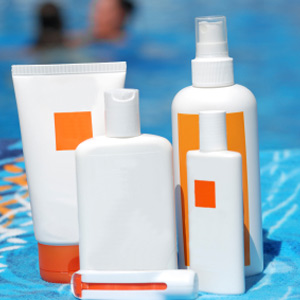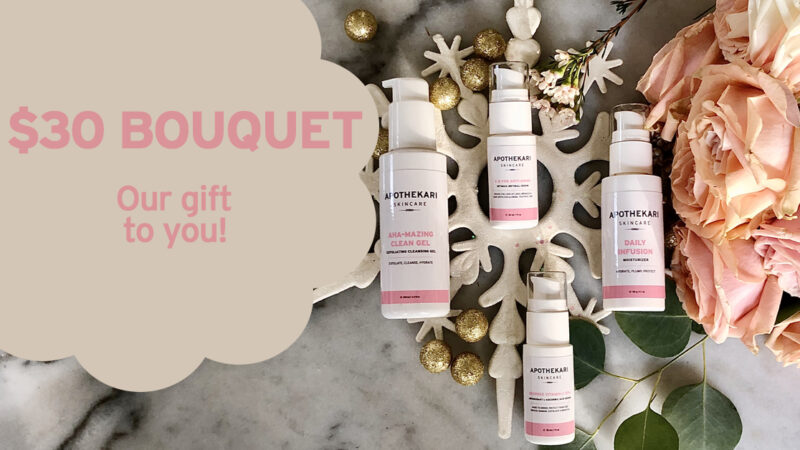Most of us are concerned about what we put on our skin these days so it’s not surprising that when the sun is shining brightly, that we seek the safest sunscreen possible. (Be warned: This is a long post!)
We have been confronted with information that sunscreens are dangerous and that they may even contribute to skin cancer. However, it’s important to acknowledge that there is very little to no evidence linking sunscreen use with developing skin cancer and that medical health professionals still recommend sunscreen and sun protection as your number one defense against developing skin cancer. In this post let’s take a closer look at the various sun screening filters available today to help you find the safest sunscreen to use.
We’ve posted before about sunscreen ingredients, discussing the differences between the two main types – physical blocking filters and chemical blocking filters. While both types are effective, they work differently. Physical blockers work by sitting on top of the skin and blocking or deflecting UV rays, while chemical blockers interact with the skin’s surface and work to absorb UV rays and convert them into harmless energy. Some chemical blockers also have the ability to deflect UV rays. For this reason, you may find that physical blocking sunscreens feel thicker in texture than chemical blocking ones. And that’s just due to how they differ in their activity.
Whether physical or chemical, some filters are effective against UVA rays (the longer penetrating ones that contribute to skin aging) and others against UVB rays (the ones responsible for sunburns). Only one sunscreen filter, zinc oxide (a personal favourite) covers the full spectrum of UVA and UVB rays. It’s easy to get confused about sunscreen ingredients because there are so many available today. Thankfully, when it comes to sunscreens, the active ingredients (in this case the actual sun filtering agent) are listed separately to help you identify what the bottle contains.
The chart below is designed to help you understand the differences between commonly used sunscreens, the protection they afford and whether they have any side effects. Sunscreen agents are often combined together to maximize their activity. We haven’t listed every sunscreen agent below, but the most commonly ones used are. As well, we are only able to provide information currently available so if spaces are blank it is because we don’t know.
Chemical blockers tend to be more widely implicated with skin allergies and hormone disruption (they act like estrogen in the body, causing hormonal disturbances, altering sperm, and may play a role in endometriosis). Additionally, two of them, oxybenzone and octinoxate have been shown to be harmful to coral reefs. Physical blocking sun filters like zinc oxide and titanium dioxide are generally associated with less side effects and are recommended as sunscreens of choice for individuals with sensitive skin.
What is the Safest Sunscreen?
Having recommended sunscreens for many years, the safest sunscreen should have the following characteristics:
- Little to no absorption into the bloodstream (to minimize systemic side effects)
- Little to no skin irritation
- No hormonal disruption
- Photostable (so that it doesn’t degrade upon exposure to sunlight)
- No impact on coral reefs.
.tg {border-collapse:collapse;border-spacing:0;}
.tg td{font-family:Arial, sans-serif;font-size:14px;padding:10px 5px;border-style:solid;border-width:1px;overflow:hidden;word-break:normal;border-color:black;}
.tg th{font-family:Arial, sans-serif;font-size:14px;font-weight:normal;padding:10px 5px;border-style:solid;border-width:1px;overflow:hidden;word-break:normal;border-color:black;}
.tg .tg-l711{border-color:inherit}
.tg .tg-us36{border-color:inherit;vertical-align:top}
Chemical Filter |
Range Covered |
Skin Allergy? |
Enters Bloodstream? |
Photostable |
Hormone Disruption |
Reef Safe? |
Other? |
|---|---|---|---|---|---|---|---|
CHEMICAL BLOCKERS |
|||||||
Avobenzone |
UVA |
Relatively high rates of skin allergy |
Limited skin penetraton |
Unstable in sunshine; must be mixed with stabilizers |
No evidence |
At high concentrations may cause coral bleaching |
|
Mexoryl SX (Ecamsule, Terephthalylidene Dicamphor Sulfonic Acid |
UVA |
Skin allergy is rare |
Less than 0.16% skin penetration in human volunteers |
Photostable |
No evidence of hormone disruption |
||
Mexoryl XL (Drometrizole trisiloxane) |
No skin penetration |
Photostable |
|||||
Ensulizole (Phenylbenzimiazole Sulfonic Acid, Eusolex 232, Parsol HS |
UVB |
Does not degrade much in sunlight, but more needs to be studied about its stability |
|||||
Homosalate |
UVB |
Found in mothers’ milk; skin penetration less than 1% in human and laboratory studies |
Disrupts estrogen, androgen and progesterone |
Unsafe breakdown products |
|||
Octocrylene |
UVB |
Relatively high rates of skin allergy |
Found in mothers’ milk; skin penetration in lab studies |
||||
Octinoxate (Octyl Methoxycinnamate) |
UVB |
Yes |
Yes (moderate) |
Hormone-like activity; reproductive system, thyroid and behavioral alterations in animal studies |
Implicated with coral bleaching |
||
Octisalate (Octyl Salicylate) |
UVB |
Rare |
Skin penetration in lab studies |
||||
Oxybenzone |
UVA, UVB |
YES (high rates) |
Yes |
Weak estrogen, moderate anti-androgen; associated with altered birth weight in human studies |
Causes deformities in soft tissue and also causes the coral larvae to encase itself in its own skeleton. Contributes to coral bleaching, deforms and kills baby coral, so reefs are less able to regenerate. |
||
Tinosorb S (Bis-ethyl-hexyloxyphenol methoxyphenyltriazine, BEMT,
|
UVA, UVB |
Minimal |
Highly |
||||
Tinosorb M ( Methylene bis-benzotriazolyl tetramethylbutyl-phenol, MBBT, Bisoctrizole) |
UVA, UVB |
Tends to be non-irritating to skin |
Minimally absorbed by skin |
Shows little photodegradation, so it’s pretty photostable |
|||
PHYSICAL BLOCKERS |
|||||||
Titanium Dioxide |
UVA (not full range) UVB |
No |
No finding of skin penetration |
Yes |
No evidence of hormone disruption |
Inhalation concerns (try to avoid sprays and powders) |
|
Zinc Oxide (found in our Shade SPF 30) |
UVA, UVB |
No |
Less than 0.01% skin penetration in human volunteers |
Yes |
No evidence of hormone disruption |
Inhalation concerns (try to avoid sprays and powders) |
*Sources: The Skin Cancer Foundation, EWG
Due to the side effects and danger to the coral reefs associated with these two sun filtering agents, it’s probably wise to stay clear of:
- Oxybenzone
- Octinoxate.
Many effective and safer alternatives are available so it shouldn’t be difficult to avoid them.
We hope that this information helps you to find the safest sunscreen ingredients for you and your family. If you’re still not sure, get in touch. We know A LOT about sunscreens and we’d be happy to help.




